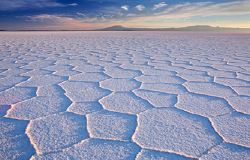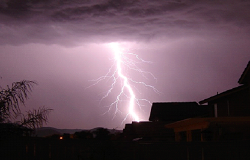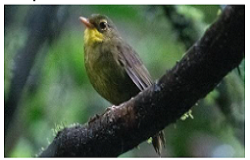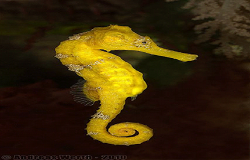|
Art & Culture
Sishupalgarh ancient site

|
Context: Land mafias damage rampart of ancient fortified city of Sisupalgarh.
About:
- Sisupalgarh is thought to have been built around the 7th to 6th century BCE.
- It served as the capital of the Kalinga kingdom.
- It was an important centre of trade and commerce during ancient times.
- Fortified city was architectural and engineering marvels of the ancient India.
- The urban core was 1.2 km by 1 km in size and was moated all around. The city has a special water management system.
- This is the only fortified site in India having eight gateways.
- When King Kharavela began to restore the city 2,100 years ago, in the fourth to third century BCE, the fortress was completed.
- The excavation of the Sisupalgarh site was first taken up in 1948, when it was declared a Centrally Protected Monument under the provisions of the Ancient Monuments Preservation Act, 1904.
|
|
Geography
Hybrid Solar Eclipse

|
A hybrid solar eclipse will happen on April 20, 2023.
About:
- A hybrid solar eclipse is one which will appear either as an annular eclipse or a total eclipse depending on the viewer's location.
- During an annular eclipse, the Moon will not fully cover the Sun and as a result, it will appear as a dark disk superimposed on the Sun.
Types of solar eclipse:
There are three main types of solar eclipses:
- Total solar eclipse: A total solar eclipse is visible from a small area on Earth.
- Partial solar eclipse: This happens when the Sun, Moon and Earth are not exactly aligned.
- Annular solar eclipse: An annular eclipse happens when the Moon is farthest from Earth.
|
|
Geography
Salt flats

|
In salt flats across the world, the salt on the surface forms ridges that join together in a patchwork of pentagons and hexagons, this remains same for all regions they found in.
- The captivating patterns have been photographed from Bolivia, Chile, China, India (in the Rann of Kutch), Iran, Tunisia, and the U.S.
About Salt Flats:
- A salt flat is a natural landscape in which a large area of flat land is covered by salt.
- The world’s most well-known salt flat is the Salar de Uyuni in Bolivia.
How are they formed?
- A salt flat forms from a natural water body whose recharge rate is lower than the evaporation rate.
- Over time, all the water evaporates, leaving behind the dissolved minerals, usually salts. They reflect sunlight strongly and thus appear bright.
- The underlying soil is highly saline: even if the water table is shallow, the groundwater is too salty for humans to drink.
How do the shapes form?
- The researchers began with the hypothesis that the salt on the surface is influenced by the salt flowing through the soil below.
- The groundwater in the soil is saline but the distribution of salt is not uniform.
- The salinity is highest near the top of the soil and decreases towards the bottom.
- The researchers found that the salt penetrated deeper into the soil exactly below the ridges, and remained shallow under the flat areas.
|
|
Geography
Hot lightning strikes

|
Soaring global temperatures could lead to more “hot lightning” strikes in many parts of the world, a new study has found.
Key findings:
- The lightning is a major cause of triggering wildfires and is responsible for producing the largest wildfires in some regions.
- Lightning-caused wildfires are dangerous as they spread rapidly before a strong response can be implemented and release substantial amounts of carbon, nitrogen oxides and other trace gases into the atmosphere.
- The researchers analysed 5,858 selected lightning-ignited fires based on satellite images of US wildfires between 1992 and 2018 and found that approximately 90 per cent of them might have started by “hot lightning” strikes.
- Also known as long continuing current (LCC), this type of lightning strike can last from around 40 milliseconds to nearly a third of a second.
What is Hot lightning?
- Lightning is a rapid and massive electrical discharge that takes place between storm clouds and the ground, or within the clouds themselves.
- Scientists believe that for lightning to occur, positive and negative charges must separate within a cloud.
When does it take place?
- According to the National Oceanic and Atmospheric Administration (NOAA), when the water droplets in the bottom part of the cloud are moved upwards, where the much colder atmosphere freezes them into small ice crystals.
|
|
International Relations
The Windsor framework

|
The UK government under Prime Minister Rishi Sunak reached a landmark deal with the European Union (EU) on post-Brexit trade rules that will govern Northern Ireland.
About:
- The ‘Windsor Framework’ will replace the Northern Ireland Protocol, which had proved to be among the thorniest of Brexit fall-outs, creating problems both economic and political.
- The framework has two crucial aspects – the introduction of a green lane and red lane system for goods that will stay in Northern Ireland and those that will go to the EU respectively; and the ‘Stormont Brake’, which allows Northern Ireland lawmakers and London to veto any EU regulation they believe affects the region adversely.
|
|
Polity and Governance
Hallmark Unique Identification (HUID) number

|
Before implementation of 6 digit Hallmark Unique Identification (HUID) number, hallmarking of Gold jewellery becomes mandatory by the Central government.
Background:
- A 6 digit HUID was introduced from 01 July 2021 and all articles hallmarked post 01 July 2021 have to be hallmarked with HUID only.
- After introduction of HUID, hallmark consisted of 3 marks viz, BIS logo, purity of the article and six-digit alphanumeric HUID.
- Each hallmarked article has unique HUID number which is traceable.
About:
- According to the Department of Consumer Affairs website, hallmark consists of 3 symbols which give information.
-
- the first symbol is the BIS logo
- the second symbol indicates purity and fineness
- the third symbol is the HUID
- Every item of jewellery will be issued a HUID number at the moment of hallmarking, and each one will be unique.
- At the Assaying & Hallmarking centre, the jewellery is hand stamped with the unique number.
|
|
Economy
Nano liquid DAP
|
Context: Prime Minister hailed the government's approval to nano liquid DAP fertiliser, mentioning it an important step towards making life easier for farmers.
What is Nano Urea?
- Nano Urea is a nanotechnology based revolutionary Agri-input which provides nitrogen to plants.
- Nano Urea is a sustainable option for farmers towards smart agriculture and combat climate change.
- Nano urea is a patented and indigenously made liquid that contains nanoparticles of urea, the most crucial chemical fertiliser for farmers in India.
- A single half-litre bottle of the liquid can compensate for a 45kg sack of urea that farmers traditionally rely on, it is claimed.
- Nano urea (Liquid) contains 4 % nanoscale nitrogen particles.
- Nanoscale nitrogen particles have a small size (20-50 nm); more surface area and number of particles per unit area than conventional urea.
|
|
Economy
Windfall tax
|
The Government has marginally hiked windfall tax on locally produced crude oil to Rs.4400 per tonne from Rs.4350 per Tonne.
About:
- It was introduced in 2022.
- Windfall taxes are designed to tax the profits a company derives from an external, sometimes unprecedented event— for instance, the energy price-rise as a result of the Russia-Ukraine conflict.
- These are profits that cannot be attributed to something the firm actively did, like an investment strategy or an expansion of business.
- The United States Congressional Research Service (CRS) defines a windfall as an “unearned, unanticipated gain in income through no additional effort or expense”.
Objectives:
- The introduction of the windfall tax as a way to rein in the “phenomenal profits” made by some oil refiners who chose to export fuel to reap the benefits of skyrocketing global prices while affecting domestic supplies.
Global Scenario:
- Besides India, a wave of countries including the United Kingdom, Italy, and Germany have either already imposed a windfall profit tax on super normal profits of energy companies or are contemplating doing so.
|
|
Science and Technology
NISAR satellite

|
Recently, NASA announced that the NISAR satellite has been handed over to India for other additions.
About NISAR:
- NISAR (NASA-ISRO Synthetic Aperture Radar) is being jointly developed by NASA and ISRO.
- The launch is scheduled for 2024.
- NASA-ISRO SAR (NISAR) is a Low Earth Orbit (LEO) observatory.
Purpose:
- NISAR will map the entire globe in 12 days and provide spatially and temporally consistent data for understanding changes in Earth’s ecosystems, ice mass, vegetation biomass, sea level rise, groundwater, and natural hazards including earthquakes, tsunamis, volcanoes, and landslides.
- It carries L and S dual band Synthetic Aperture Radar (SAR), which operates with the Sweep SAR technique to achieve large swaths with high-resolution data.
- The SAR payloads mounted on Integrated Radar Instrument Structure (IRIS) and the spacecraft bus are together called an observatory.
|
|
Science and Technology
Exercise Shinyuu Maitri

|
The Indian Air Force (IAF) is participating in Exercise Shinyuu Maitri with the Japan Air Self Defence Force (JASDF).
About the exercise:
- Exercise Shinyuu Maitri is a bilateral military exercise between Indian Air Force (IAF) and Japan Air Self Defence Force (JASDF).
- The exercise is being organized on the sidelines of the Indo-Japan Joint Army Exercise, Dharma Guardian.
- The IAF contingent is participating in the exercise with one C-17 Globemaster III
- The first phase of the exercise consists of discussions on transport operations and tactical manoeuvering, followed by the second phase of flying drills by IAF’s C-17 and JASDF C-2 transport aircraft.
- The exercise will enhance mutual understanding and interoperability between the two air forces.
|
|
Environment
Dusky Tetraka

|
Dusky Tetraka has been spotted for the first time in 24 years.
About:
- The Dusky Tetraka, a small olive-coloured and yellow-throated mysterious songbird.
- The bird, which some feared to be extinct, was rediscovered by an expedition team searching the tropical forests of north-eastern Madagascar.
- The Dusky Tetraka has a history of mistaken identity largely because it closely resembles the Spectacled Tetraka.
|
|
Environment
Mugger Crocodile (Crocodylus Palustris)
 |
Anthropogenic threats like illegal fishing and sand mining pose a threat to the mugger crocodiles (Crocodylus plaustris) of the Rapti river flowing along the Chitwan National Park (CNP) in south-central Nepal, contiguous to the Valmiki Tiger Reserve in Bihar.
About:
- The Mugger Crocodile (Crocodylus Palustris) also known as the Indian crocodile has a body covered in brown scales and has the widest snout of all the different crocodile species.
- The Mugger crocodile looks like an alligator due to its snout.
- They are native to the freshwater settings of southern Iran and India.
- They can be found in rivers, lakes, hill streams, and village ponds.
- The Mugger crocodile’s diet consists of fish, reptiles, birds, insects, and mammals.
- They are opportunistic feeders. They are considered vulnerable to extinction due to habitat destruction and illegal hunting practices by humans.
- The Mugger crocodile has a lifespan of 44 years.
- Crocodilia is an order of large, semiaquatic, carnivorous, solitary reptiles that first appeared 95 million years ago.
- Crocodilia, surprisingly, are most closely related to birds, as the only two remaining survivors from the Archosauria age.
- Crocodilia have members such as crocodiles and alligators.
|
|
Environment
Yellowstone National Park

|
Yellowstone National Park, celebrating its 151st anniversary contains large biodiversity.
About
- American national park Yellowstone NP is situated in the western part of the country, primarily in Wyoming's northwest corner and spreading into Montana and Idaho.
- In addition to being the first national park in the United States, Yellowstone is considered to be the first national park of the world.
- The park is renowned for both its abundant wildlife and geothermal features, with Old Faithful geyser being one of its most well-known.
- Even though it represents a variety of biomes, the subalpine forest is the most prevalent.
- It corresponds to the South Central Rockies forests ecoregion.
- Moreover, the region serves as the unique location where the western United States' three largest river basins merge.
- The rivers of the Snake-Columbia basin, Green-Colorado basin, and Missouri River Basin all begin as snow on the Continental Divide as it weaves across Yellowstone’s peaks and plateaus.
- It is home to multiple mega fauna like grizzly bears, wolves, and free-ranging herds of the endangered bison and elk.
|
|
Environment
Jerdon’s narrow-mouthed frog (Uperodon montanus)
 |
Jerdon’s narrow-mouthed frog (Uperodon montanus) has been re-spotted in western ghats.
- Since it was last studied in 1934 by a British scientist, the species faded into oblivion.
About
- It is a species of narrow-mouthed frog (family Microhylidae) endemic to the Western Ghats of India.
- This frog is considered a montane species and is restricted to higher altitude ranges of 800-1,700 metres,
- They are distributed from near Wayanad south across the Palghat and the Shencottah gaps to the Agasthyamalai hills.
- It is classified as ‘Near Threatened’ in the IUCN Red List of Threatened Species.
- Its tadpoles are which means they feed on other species.
Rain-water filled tree holes are the favoured microhabitat of these frogs. |
|
Environment
Sea Horse (Hippocampus kelloggi)

|
Extensive fishing off the Coromandel Coast could be forcing the great seahorse to migrate laboriously toward Odisha.
About:
- Seahorses are tiny fishes that are named for the shape of their head, which looks like the head of a tiny horse.
- There are 46 species of seahorses reported worldwide.
- The coastal ecosystems of India house nine out of 12 species found in the Indo-Pacific, one of the hotspots of seahorse populations that are distributed across diverse ecosystems such as seagrass, mangroves, macroalgal beds, and coral reefs.
- These nine species are distributed along the coasts of eight States and five Union Territories from Gujarat to Odisha, apart from Lakshadweep and the Andaman and Nicobar Islands.
- The population of the great seahorse, which is among the eight species tagged ‘vulnerable’, is declining due to its overexploitation for traditional Chinese medicines and as ornamental fish, combined with general destructive fishing and fisheries bycatch.
|
|
Environment
World Wildlife Day 2023

|
Every 3rd of March, wildlife is celebrated all over the world for the UN World Wildlife Day.
About:
- This date was chosen as it is the birthday of CITES, the Convention on International Trade in Endangered Species of Wild Fauna and Flora, signed in 1973.
- This year is the 50TH Anniversary of signing the convention.
- World Wildlife Day 2023 acknowledges the significant contribution CITES has made to sustainability, wildlife and biodiversity conservation and how this contribution has been enhanced by the bridge-building and partnership work done within the CITES framework.
- It also recognizes how CITES has partnered and collaborated with other conventions, UN agencies and other organizations in the service of the broader UN goals, such as the Sustainable Development Goals and the Post-2020 Framework on Biodiversity.
- CITES:
- CITES was drafted as a result of a resolution adopted in 1963 at a meeting of members of IUCN (The World Conservation Union).
- Parties to convention:
- CITES is an international agreement to which States and regional economic integration organizations adhere voluntarily.
- States that have agreed to be bound by the Convention ('joined' CITES) are known as Parties.
- For many years CITES has been among the conservation agreements with the largest membership, with now 184 Parties.
|

















